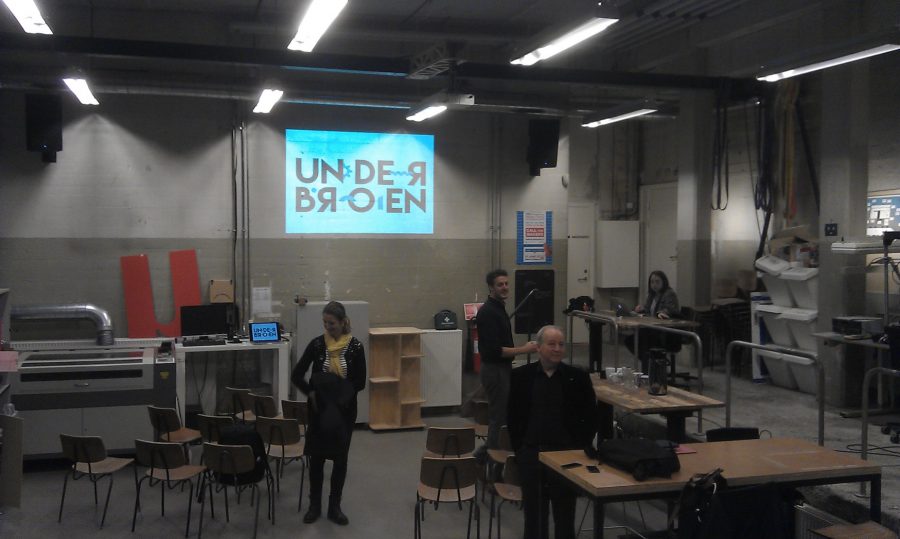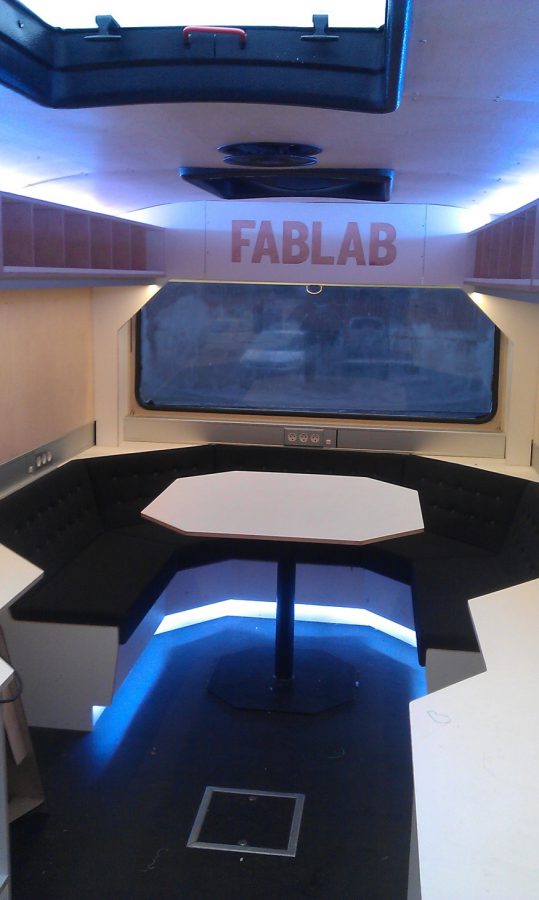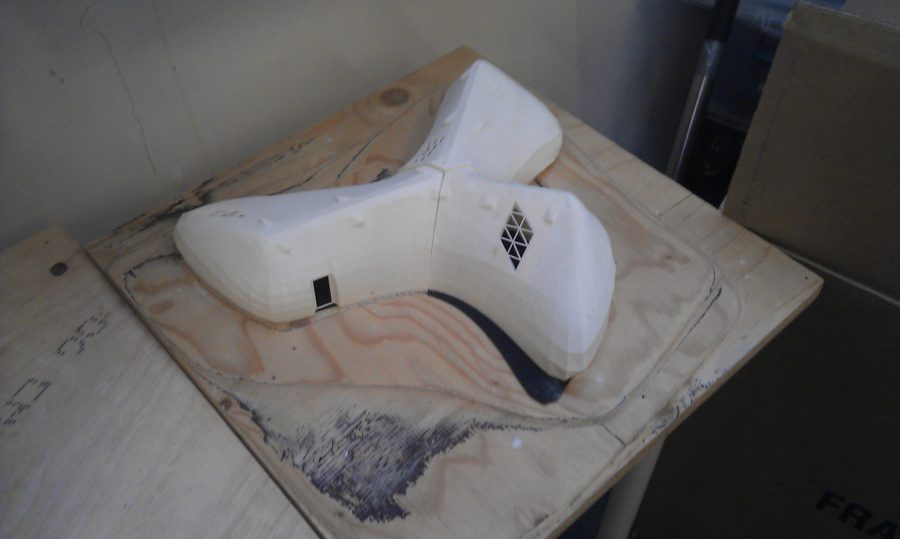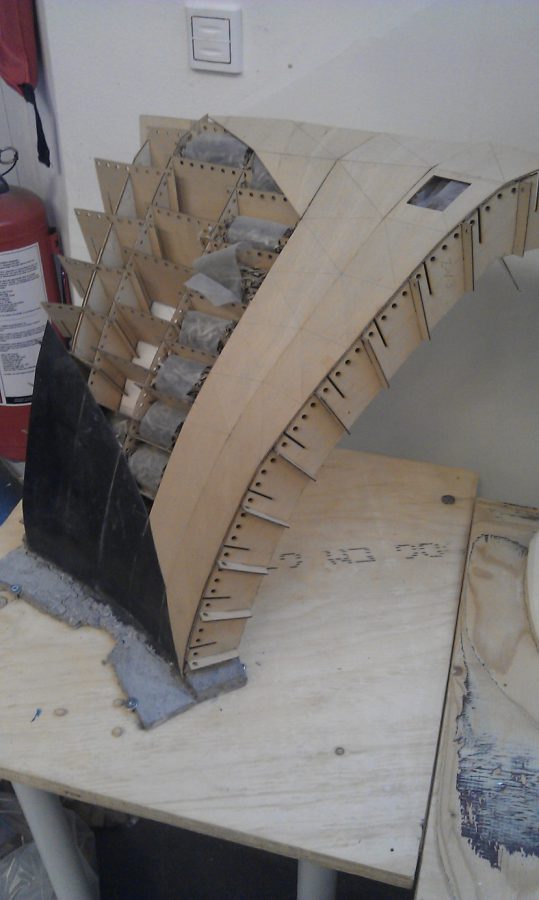In the mid of October of 2016 our FABLAB managers had a trip to Denmark to gain new experience of FABLAB creation. This journey was unique in multiple senses. During training the big picture of FABLABs integration into economic and social systems was revealed. Different organizations directly connected to FABLAB ecosystem were presented and a huge variety of FABLAB new types were visited.
Among the most amazing FABLABs from the visit program we can name the following:
- UNDERBROEN – FABLAB with ties to smart city of Copenhagen,
- Venture Cup and CSE Lab – organizations that make startups competitions and trainings on international level,
- the DTU Skylab – the best example to be recommended to every university wishing to create FABLAB.
- And FABLAB RUC at Roskilde University in Trekroner.
Further some exciting details are presented.
Visit to UNDERBROEN
The new early-stage “FABLAB UNDERBROEN” (literal translation from Danish means “FABLAB under the bridge”). Taking into account that it is usually hard to find suitable placement for laboratories like FABLABs in big cities, UNDERBROEN implements unique idea of using municipal space. It is located under the Copenhagen bridge Langebro which is quite interesting solution of “available urban space” problem.
This is a new workshop for makers and creative entrepreneurs/companies with focus on urban production, traditional handcraft and new production methods in the digital and physical field (CNC-routers, 3D-printers, laser cutters and open source-electronics).
“FABLABs are like manufactures in the age before industrial revolution with one small difference – we all have internet and can share models instantly and worldwide…”

UNDERBROEN FABLAB helps the Copenhagen smart-city infrastructure to solve some of its tasks and shows how creative people can collaborate
This FABLAB was created by the group of people, who had connection to Copenhagen Council willing to develop concept of digital citizen and start projects that will helps them to solve some smart city problems.
As it was explained in UNDERBROEN: FABLABs are like manufactures in the age before industrial revolution with one small difference – we all have internet and can share models instantly and worldwide. So now everyone in community becomes an R&D engineer and can quickly and cheaply create and test different models in physical form. On the other hand, for those who want just to use or consume stuff – they now are able to make everything locally. This is also good because countries with FABLABs will be less dependent on China goods and negative factors created by export-import oriented economies.
FABLAB DENMARK
FabLab Denmark and the Mobile FabLab in Næstved are the most amazing and unbelievable FABLABs you have ever seen. Imagine you could take all your equipment (including CNC milling machines, laser cutters and all your other things), put it into the school bus and go driving around the whole country making cool stuff and teaching by entertaining schoolchildren and students. And yes! This is possible. In the early stages Veaksthus Zealand had the same problems as every FABLAB has and to be more precise – they had no space available to settle the lab. So they decided to take old school bus and transform it into the laboratory on the wheels.
 FABLAB in the bus
FABLAB in the bus
For those who know how huge is FABLAB equipment, you might think that the bus inside mostly looks like a truck overloaded with tools and different kind of machinery so no living soul might get into it. But the reality is different:

The bus inside
Inside the bus you may find stylish saloon with changing colorful lightning ready for the magic show of bits and atoms to begin. The tools and other machines are carefully hidden behind numerous doors, shelves and drawers and the room you see first overwhelms your imagination. The only question ringing in the head by this moment – where is all those huge and heavy equipment you’ve used to see in other FABLABs?
And the answer is even more surprising, because this is the FABLAB that builds space for itself.
Using laser cutters, 3D modeling, some plastic and wood FABLAB DENMARK created quite fascinating futuristic building for its equipment.

FABLAB Denmark view outside

3D printed model of FABLAB Denmark

The best illustration of the process of building is shown on this picture. After 3D model was constructed – triangle components are cut using laser cutter from wood pieces. Then those pieces are assembled like constructor Lego into the grids and finally into the dome structure. To avoid overheating free space between celling and roof is filled with grass. And the top of the roof is covered by some water resistant polymer.

Under the “dome”
On the photo above you can see the inside interior of the constructed FABLAB. It looks like you’ve got into the alien spaceship with bright thin lighting, lots of tools in every corner and quite interesting acoustic.
So it seems that the easiest way to create FABLAB is to follow the example of FABLAB DENMARK.
Visit to Venture Cup and CSE-Lab
Venture Cup is a common platform for all Danish universities from which identifies and supports the entrepreneurs of tomorrow among the students. CSE-Lab is Copenhagen School of Entrepreneurship the entrepreneurial incubator at Copenhagen Business School.
Venture Cup and CSE-Lab have shown how FABLABs can be effectively promoted in the right communities and how sustainable development of FABLAB can be reached.

Venture Cup – National and international competitions for University students to boost innovation and entrepreneurship.
This training in Copenhagen has given a lot of useful and interesting insights and ideas about diverse aspects of FABLAB development and maintenance on all levels.
This has helped us to understand better the strategic and tactical decisions made in FABLAB development and why these decisions did work or failed in the past. Also different university-based FABLABs and their solutions to wide range of organizational and financial problems were presented.
The experience gained from this program in Copenhagen will be very helpful for designing sustainable model of IASA-KPI FABLAB.
We wish to express special thanks to the Veaksthus Zealand for the very nice collection of places to be seen. That inspires the IASA team to work hard on the main FABLAB objectives and outcomes.




